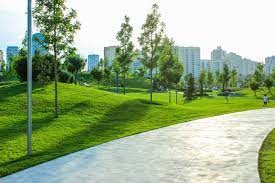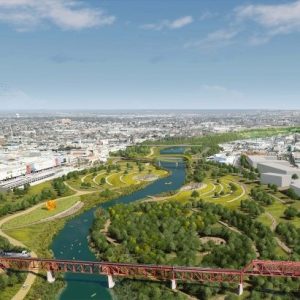Planning green spaces is the first step in developing a liveable community as a recreational one. The importance of urban greening cannot be overstated for maintaining human health and the connection to nature. We frequently witness the quick destruction of greenery, which has long-term detrimental effects on both the state of nature and human health. The trend of more frequent natural disasters is directly correlated with a reduction in green area.
Cities are typically planned and built for people, with “green” avenues and open areas serving as hubs of social activity. High population density and extensive construction to provide contemporary amenities like transportation and commercial structures are the traditional characteristics of urban areas. They are currently under more stress than ever before because of growing populations, resource scarcity, and the escalating effects of climate change. The amount of open space and green space in a city is one of the metrics used to assess Sustainable Development Goal (SDG) 11.
Cities do not adhere to the established minimum threshold of 45 percent (30 percent for streets and 15 percent for green spaces). Even in planned regions of new cities, just 15% of the land is assigned to roadways on average. There are barely 2% in uncontrolled regions. Due to the lack of natural space; urban living conditions are harmful. A decarburization agenda ought to be led by cities. The first step towards reducing carbon emissions and achieving ecosystem resilience is making cities low-carbon emmitting and altering how they are planned. At the same time, they should make sure that the adaptation agenda allows urban planning to adjust to climatic stresses. Public green spaces include:
- Increased tree cover in urban areas
- An increase in walking and cycling infrastructure, with room for adults and children to engage in outdoor activities, to replace car-centric designs and parking lots, would encourage a sense of security and safety.
The advantages of a green approach to urban planning are being recognized by cities all over the world since it has the potential to reduce urban temperatures, reduce air pollution. Increasing green canopy coverage is one of the top ten urban planning priorities as the global population growth puts more pressure on maintaining sustainable levels of life. According to a World Health Organization study on urban green space interventions and health, green spaces are advantageous to people’s mental, emotional, and physical health. According to the survey, urban green space “offers health benefits, especially for economically disadvantaged people, children and senior individuals. Therefore, ensuring that all people have sufficient access to green space is crucial.
Accessibility; also requires maintaining and enhancing already-existing green spaces. Although green spaces are typically physically accessible in low-income neighborhoods, they are frequently unattractive because of safety issues and other issues that may be rectified with maintenance and investment. These spaces can be created anywhere, even in heavily inhabited regions, in locations such as overgrown vacant houses and other underutilized areas. Alternately, you may create green spaces out of ageing buildings and infrastructure.


Urban green spaces offer a wide range of services for human well-being in both active and passive roles. Green spaces play a variety of functions beyond just promoting human health. open green spaces in urban areas that are in good condition have been linked to happier and healthier cities, according to research. Urban areas should be connected to the green planting system as much as possible. Due to limited access to the outdoors during these difficult times, it has become clear how highly valued these outdoor areas are and how crucial it is to ensure that everyone has access to green space. It’s time to start treating urban green spaces as the public health concern that it is and to make investments for the future.
